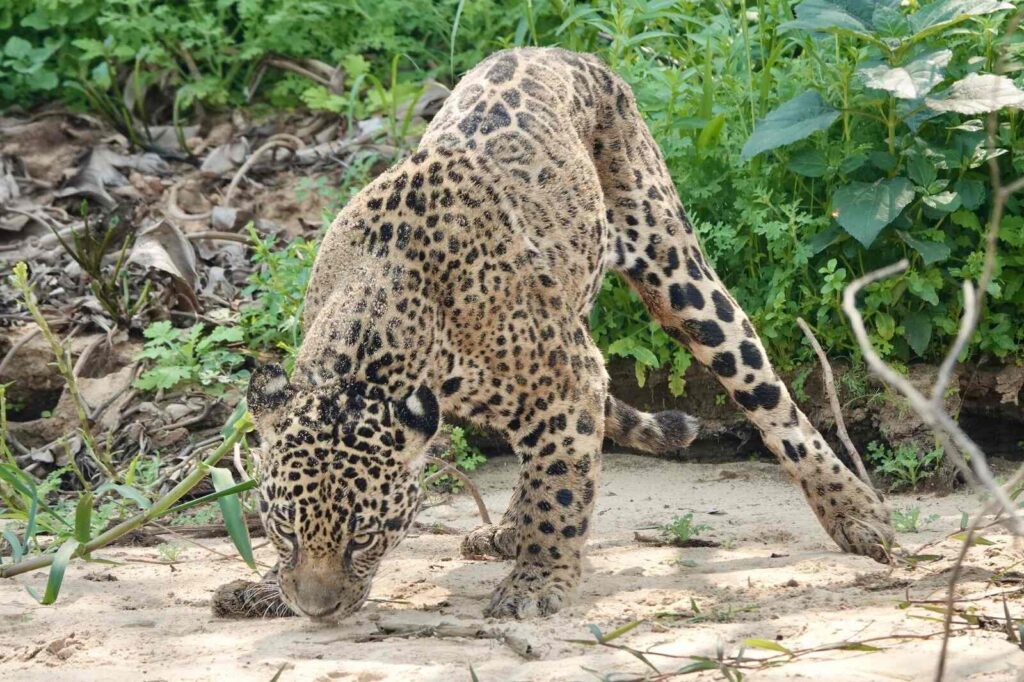Jaguar observation in the wild is tough but incredibly cool. These big cats are super elusive, sticking to the thick jungles, rainforests, and wetlands of Central and South America, especially in the Amazon and in the Pantanal. They’re super stealthy and usually roam alone, so spotting one takes a lot of patience and sometimes just plain luck.
Jaguar observation in the State park Encontro das Aguas in the brazilian Pantanal.
To track jaguars on tours, people look for clues like paw prints, scratch marks on trees, droppings, or even the remains of their prey. These signs help wildlife lovers and researchers figure out if jaguars are nearby, especially since they’re so good at hiding in their surroundings. Althogh, in the Region of Porto Jofre in the brazilian Pantanal that should be much easier. The Number of jaguars concentrated in the State park Encontro das Aguas in the Pantanal is much larger and due to the intense touristic activities of Pantanal tours in the park, boat drivers and tour guides are familier to the place where jaguars will possibly be. Making the adventure much more succesful. Useally Tourists can spot 1 to 10 jaguars in a single day. In Porto Jofre one day without seen Jaguars is something really very rare.
Conservation and research.
Lately, technology has been a game-changer for studying jaguars. Motion-sensor cameras, or camera traps, are set up in the wild to snap pictures of any jaguars passing by, so researchers can get a closer look without bothering them. There’s also GPS tracking and radio collars to follow jaguar movements, which is huge for figuring out their territories and travel routes.
Learning about jaguars is super important for conservation, too. By studying them, researchers can push for protected habitats and work on stopping threats like deforestation and poaching. Plus, this knowledge helps them raise awareness and support local communities with eco-friendly practices, so these amazing cats have a better shot at surviving and thriving.


